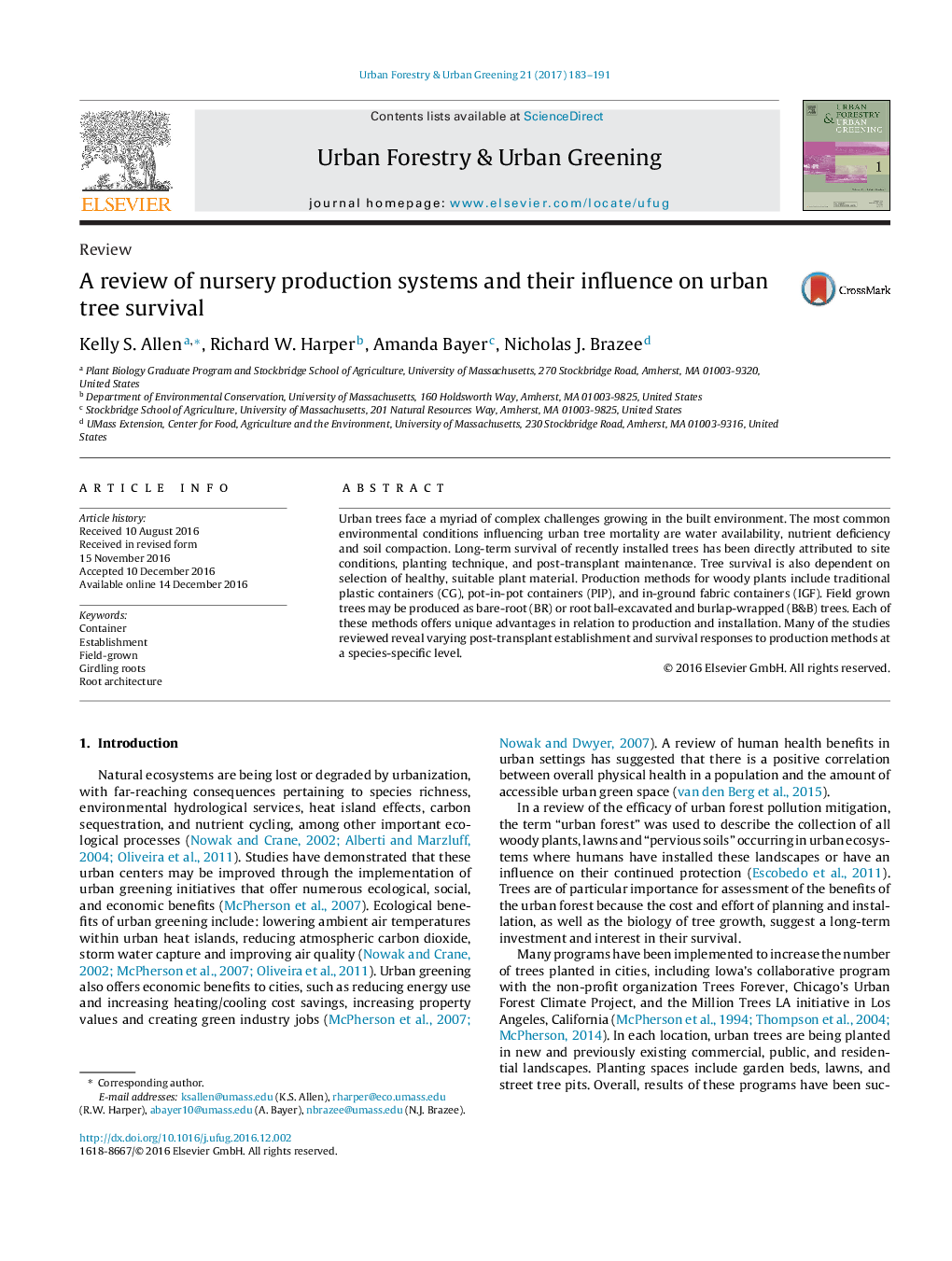| Article ID | Journal | Published Year | Pages | File Type |
|---|---|---|---|---|
| 6461665 | Urban Forestry & Urban Greening | 2017 | 9 Pages |
•Nursery production systems impact plant development and root architecture.•Production systems influence post-transplant tree survival.•Production systems influence planting practices.•Planting depth impacts stem-girdling root formation.•Production practices may alter drought stress tolerance and pest susceptibility.
Urban trees face a myriad of complex challenges growing in the built environment. The most common environmental conditions influencing urban tree mortality are water availability, nutrient deficiency and soil compaction. Long-term survival of recently installed trees has been directly attributed to site conditions, planting technique, and post-transplant maintenance. Tree survival is also dependent on selection of healthy, suitable plant material. Production methods for woody plants include traditional plastic containers (CG), pot-in-pot containers (PIP), and in-ground fabric containers (IGF). Field grown trees may be produced as bare-root (BR) or root ball-excavated and burlap-wrapped (B&B) trees. Each of these methods offers unique advantages in relation to production and installation. Many of the studies reviewed reveal varying post-transplant establishment and survival responses to production methods at a species-specific level.
